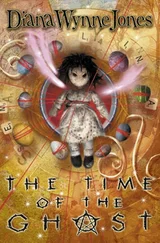A more subtle transformation has had a dramatic effect on the mutation rate. In the western world at least, a change in the age at which people have children means chat amounts of DNA damage will drop. The rate of mutation goes up with age and the effect accelerates as the years go on. Most mutations (apart from chromosome mutations, most of which are so damaging that they do not pass to the next generation) take place among males. Fathers of thirty-five do not have a rate much greater than those of eighteen, but after that mid-life moment the incidence of damage shoots up (to a rate twenty times higher in pensioners compared to schoolboys). The more old fathers, the more the genetic damage.
People now live for far longer than in earlier times, allowing mutation to take its toll on a higher proportion of the population. The cancer epidemic in the modern world is confined to older people. Cells that give rise to sperm or egg are also exposed to the destructive effects of age, which is why older parents are more likely to have damaged children. Any change in the age of reproduction will hence have an effect on the mutation rate. If the number of elderly parents goes up, there will be more inherited changes; if it decreases, fewer. Social progress has led to just such a shift. The general picture — which applies to much of the third world as well as to developed countries — is subtle and unexpected.
Before the recent improvements in public health most children died young. Parents started having children when they were themselves youthful and continued until death or the menopause. Throughout history the average number of children per couple has been two, or a little more; as, on the average, it still approximately is. The figure is now reached in a new way: not with perhaps a dozen births accompanied by ten deaths in infancy, but with around two planned and healthy offspring.
A drop in infant mortality means less pressure to have children as an insurance against old age. Contraception allows parents to delay their first child (in Britain now until the late twenties, on average) but then to complete their families quickly. Most people stop soon after they have started. As a result, and although the age at which parents have their first offspring has increased, the number of elderly mothers and fathers has gone down. As recently as the 1920s the average Englishwoman began her final pregnancy at over forty; a figure that has dropped by almost ten years. The occasional births to much older women with the help of technology (and the oldest is in her mid sixties) are so rare as to be insignificant.
Males over thirty-five are the crucial group; but the data for men are harder to gather than are those for their partners. Husbands and wives tend to share, if nothing else, about the same date of birth so that, in spite of a few aged (and anonymous) Lotharios, the figures for women contain most of the information for men. Aristotle advised that girls marry at eighteen, and men at thirty-seven. Although the age difference between the sexes is less than that husbands do tend to be three to five years older than their wives.
The changes in sexual pattern are most obvious in postwar Europe. In Britain, Poland and Switzerland the proportion of mothers over thirty-five — and hence of fathers over about forty, the group most at risk of mutation — dropped from around twenty per cent in 1950 to less than five per cent in 1985. In that year, just one mother in fifty in what was then East Germany was more than thirty-five years old, a figure probably smaller than any time in history. In Ireland the influence of the Church, and the many young men who spent a period working overseas, meant that until a few years ago the only means of birth control was self-denial. Most Irish people did not marry until their late twenties, or later, and until not long ago almost a third of all mothers {and a higher fraction of fathers) were over the crucial age; more than twice the proportion anywhere else in Europe. The number is now much lower (albeit still above the average). There has been some reversal of the trend over the past two decades, with the numbers of mothers over thirty-five increasing from its low point of around one in twenty.
The general picture remains clear: old mothers (and fathers) are rarer than they have been for much of the past. This is bound to have an effect on the mutation rate. Down's syndrome (ten times more frequent among mothers over forty-five than in teenagers) is three times more common in Pakistan (which has almost no family planning) than in Britain, because Pakistani mothers are older than their British equivalents. From the male point of view, in Britain the mutation rate in men is about one and a half times that expected if all fathers were less than thirty, but in Pakistan it is three times this low figure. At the moment, at least, it looks as if the human mutation rate is on the way down. Whether this will continue is not certain, but it puts fears about a new race of mutated monsters into context.
Mutation is the fuel of evolution but, as far as can be seen, evolution rarely runs out of steam. Natural selection, though, is its engine and, like most engines, often speeds up and slows down to face changing circumstances.
Selection is an elusive process and it is more difficult to forecast what its future might be. Nature is always liable to come up — as it has so often before — with a nasty shock. The emergence of the AIDS virus shows the risk of this happening again. Even so, in the western world at least, some of the greatest challenges have gone, because of the control of infectious disease. Once such a disease has disappeared the future of the genes that combat it will change. Cypriots carry the inherited anaemia beta-thalassaemia because it defended their ancestors against malaria. That illness has now disappeared from the island — as, in time, will thalassaemia, with the incidence of carriers dropping by as much as one per cent per generation. In time, and given success in public health, the same will happen to the many other genes that resist the infection elsewhere in the world. Soon, they will remain only as mute and waning witnesses to an ancient past.
Life has also got better for babies. They are important; changes in the survival of adults — essential to individuals as they may be — are of not much relevance to selection because they kill those who have already passed on their genes. What counts for evolution is death before reproduction. What happens to the rest of us is, more or less, beside the point. The history of one inherited character, the weight of newborns, shows just how effective improved conditions at an early age can be in reducing the action of natural selection.
At birth, it pays to be average. Underweight babies, needless to say, survive less well than do others. However, babies heavier than normal are also more likely to die in the first few weeks. In the 1930s about half the babies who died in their first year did so because they were above or below the ideal weight. A difference of just one pound had a large effect. Since some of the variation in this character is genetic, natural selection was at work against genes for extreme birth weight as it had been, no doubt, since our species began.
Now, such selection has almost gone. Improved care means that only very underweight babies, or those much larger than average, are at risk. The intensity of selection has gone down by more than two thirds since the 1950s. Nowadays there is little risk in being a baby of even a kilogram above or below the mean weight. What was once a powerful agent of evolution is on the way out.
Improved child-care has also changed the ratio of the sexes at the age when people begin to choose a mate. At birth, there are slightly more boys than girls. Boys once had less chance of surviving the hazards of childhood, which led to an almost exact balance of the sexes in the late teens. Now, boys survive almost as well as girls do, so that in future there will be a slight but noticeable excess of young men looking for a mate. If (and many dispute the idea) the differences between men and women in size, or in appearance, are driven by sexual selection, perhaps in years to come that aspect of our evolution will (unlike most of it) advance, to give a generation of taller, hairier and more libidinous males.
Читать дальше
Конец ознакомительного отрывка
Купить книгу












